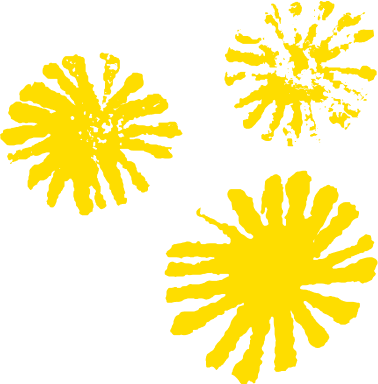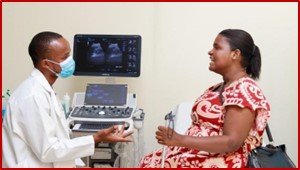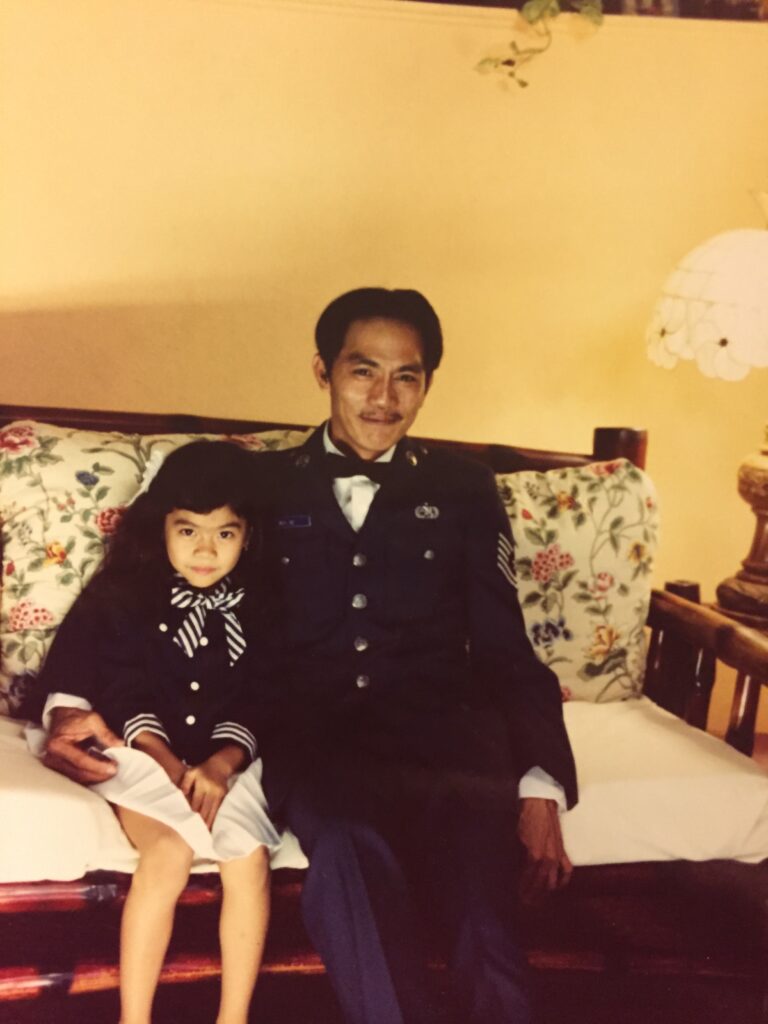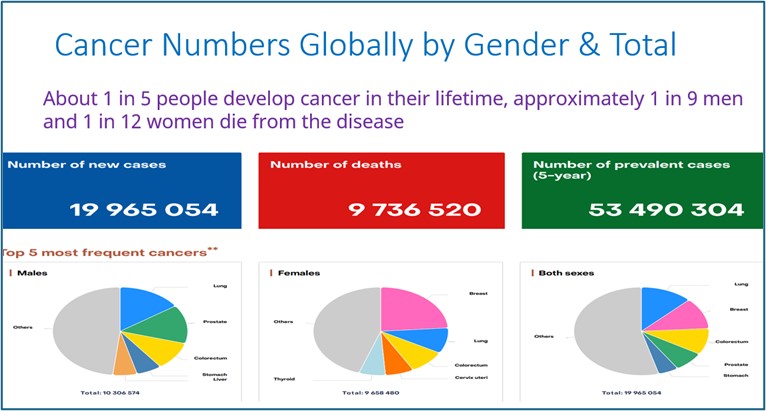Asians and Pacific Islanders in the United States are composed of many subgroups and speak many languages and are different in many ways as we discussed in our earlier papers in this series. They comprise 7.5% of Americans but about 60% of the global population as of 2022. Even though Asian American groups are heterogeneous, researchers group them as an aggregate group because Asians often show similar cultural values that contrast with their western counterparts, e.g., Asian Americans are more likely to show interdependence and family orientation than do White Americans. In evaluating the mental health of Asian Americans, some inconsistencies are apparent. As an aggregate, Asian Americans appear to be relatively successful in terms of low rates of divorce, crime, and juvenile delinquency and high rates of educational attainments, family income, and socio-economic mobility. On the other hand, they have experienced racial prejudice and discrimination, stereotypic portrayals in the media, and English language and cultural adjustment difficulties. With this background we are discussing mental health problems and explore the diversity within the group and look for some general approach to help them with their problems.
How big are the mental health problems among Asian Americans?
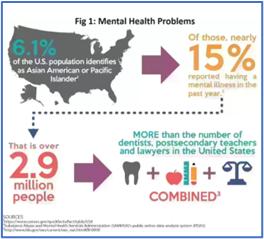 The number of people reporting mental problems is variable. One statistic indicated about 15% of the Asian and Pacific Islander have had mental illness in the past one year and using that data, at a conservative estimate of only 6% of Asian and Pacific Islander in the country, there will be nearly 3 million people who would have mental health issues reported. (See figure 1). That number for a comparison is bigger than the number of lawyers, teachers and dentists put together! With the current estimate of 7.4% of Asians, the number would go further higher up to over 3.5 million people.
The number of people reporting mental problems is variable. One statistic indicated about 15% of the Asian and Pacific Islander have had mental illness in the past one year and using that data, at a conservative estimate of only 6% of Asian and Pacific Islander in the country, there will be nearly 3 million people who would have mental health issues reported. (See figure 1). That number for a comparison is bigger than the number of lawyers, teachers and dentists put together! With the current estimate of 7.4% of Asians, the number would go further higher up to over 3.5 million people.
This number could be a misleader since Asians are known to underreport their mental health morbidity to a great extent. As compared to any other ethnicity, Asians utilize mental health services the least. These percentages vary but the consistency is the least utilization of services by Asian Americans. This may be interpreted as lesser problems in them or lesser use by them due to various reasons, which is more likely, and we will discuss those possible problems. Asian Americans are three times less likely to seek treatment or help, than other racial groups in the U.S (See figure 2)
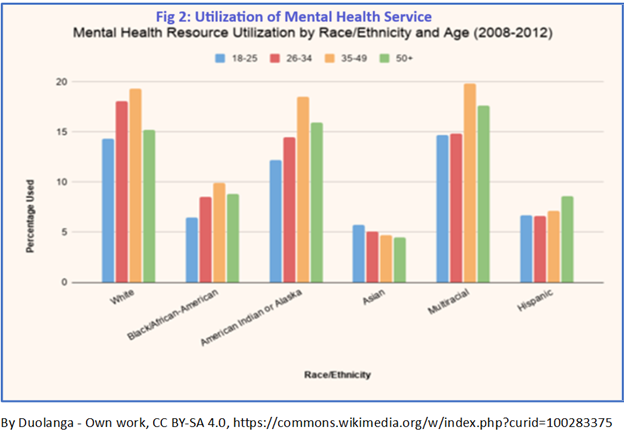
Besides having mental disorders across all ethnicity following mental problems are specific to Asian Americans
The Outsider stereotype: This occurs when someone is assumed to be foreign-born or doesn’t speak English. Some questions increase this stereotype. For example, “Where are you from?” “Where are you really from?” and “How do you say (or write) your name in your language?” This increases feelings of isolation and loneliness by being presumed as an outsider based on your race even when they are US borne Asian Americans.
Trauma: First-generation immigrants – particularly from conflict areas – may experience trauma. This trauma can be passed down to their children and subsequent generations.
Stigma: Asian Americans are the least likely racial group to take actions on their mental health and are more likely to reach out to friends and family. However, not all AAPIs have a strong support system and can have difficulty expressing their challenges due to guilt, shame, or even not being able to speak the same language.
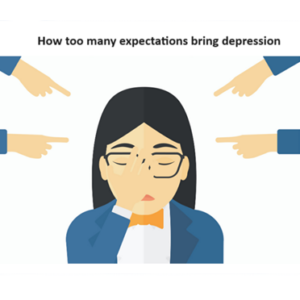 Expectations: Criticizing appearance, comparing successes, are other deterrents. Children of first-generation immigrants are particularly expected to serve as cultural and linguistic liaisons for older family members in addition to serving as a caregiver for younger children and attending school.
Expectations: Criticizing appearance, comparing successes, are other deterrents. Children of first-generation immigrants are particularly expected to serve as cultural and linguistic liaisons for older family members in addition to serving as a caregiver for younger children and attending school.
Religious intolerance: Religious minorities, are often discriminated against for their appearance and beliefs, bearing the brunt of racial profiling due to Islamophobia (It’s important to note that Sikhism is not the same as Islam). There is also the assumption of criminal status where someone is presumed to be dangerous, criminal, or deviant based on their race.
These observations along with shaming related to mental health as a cultural norm in some Asian American communities aggravate the problem and prevent them from seeking mental health care.
Many Asian Americans also have strong family obligations that center around traditional and cultural values. Ancient Asian philosophical traditions strongly identify someone’s self-value with their ability to care for their family and community. These notions encourage the idea that people with mental illness, who may not live up to these stereotypes, obligations, and values, are failures, valueless, or have no identity or purpose. These negative ideas can also discourage people from seeking treatment to avoid shaming themselves, their family, or their community.
Getting outside help may also conflict with the Asian American cultural value of interdependence, which stresses that family or community can meet all a person’s needs. This value perpetuates the idea that people should not seek professional help when relying on their family or community. A lack of mental health awareness, coupled with negative stereotypes, may cause Asian Americans to overlook, reject, deny, or ignore mental health symptoms.
Variations Among Asian Americans Mental Health Problems:
While there is a lot in common, there are differences among Asian groups and their mental health problems and here are few examples of the many that exist. 33% of Korean Americans experience symptoms of depression, while 16% of Chinese Americans experience similar symptoms. 78% of Filipino American women rate their mental health as “excellent or very good,” compared to 45% of Chinese American women and 50% of Vietnamese American women.
How best can we address this?
This is a deeply woven cultural issue and it is important to understand the Asian and Pacific Islanders culture and belief system. We need to approach with cultural competency, preferably in their language to make them more comfortable and by the health care provider who understands their culture.
According to the National Alliance on Mental Illness, incorporating Ayurveda (the traditional medicine of India), Japanese herbal remedies, acupuncture, Chinese medicine, energy health exercises, spiritual healing and guided meditation can help for some individuals.
What is most important is to accept the fact that AAPI communities have more complex mental health problems and need special attention, first to identify the issues and then to approach them empathetically and motivate them to come forward for use of available resources.
We, at the Asian Pacific Community, speak their language, provide culturally competent services that will be acceptable to them and guide them to empower their health and ensure that they have the best possible health care.
To strengthen that further at the policy level and programmatically, we in collaboration with NYU Center for the Study of Asian American Health, carry out a study called Community Health Resources and Need Assessment (CHRNA) and you all can participate in this study by clicking this link https://www.apcaaz.org/beewell and complete the study. That way we can contribute to our community’s future planning. The study is a detailed one and you will need approximately 30 minutes to complete the study and submit your contribution, that will be a big step forward to help our community for the future.
Related Articles
